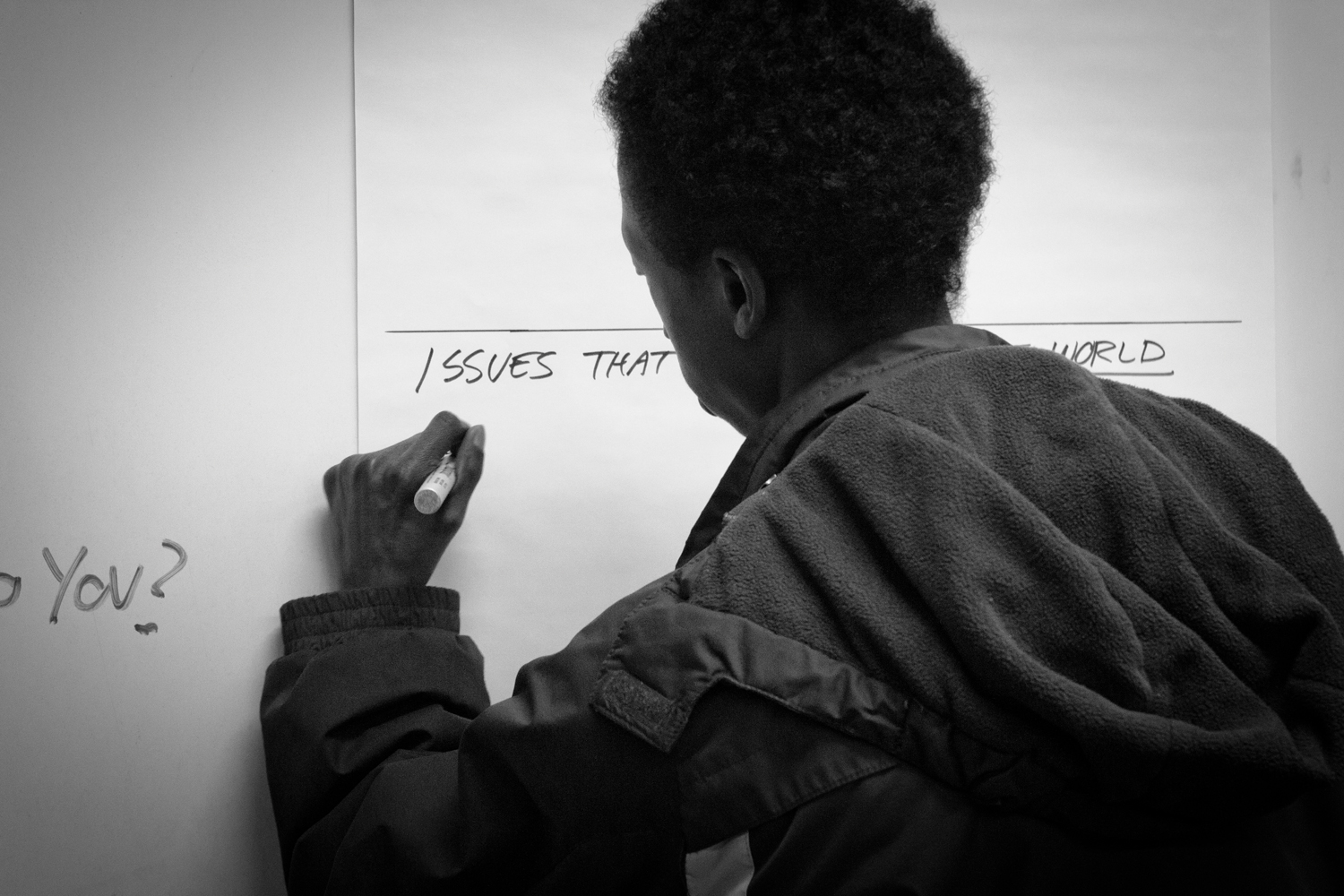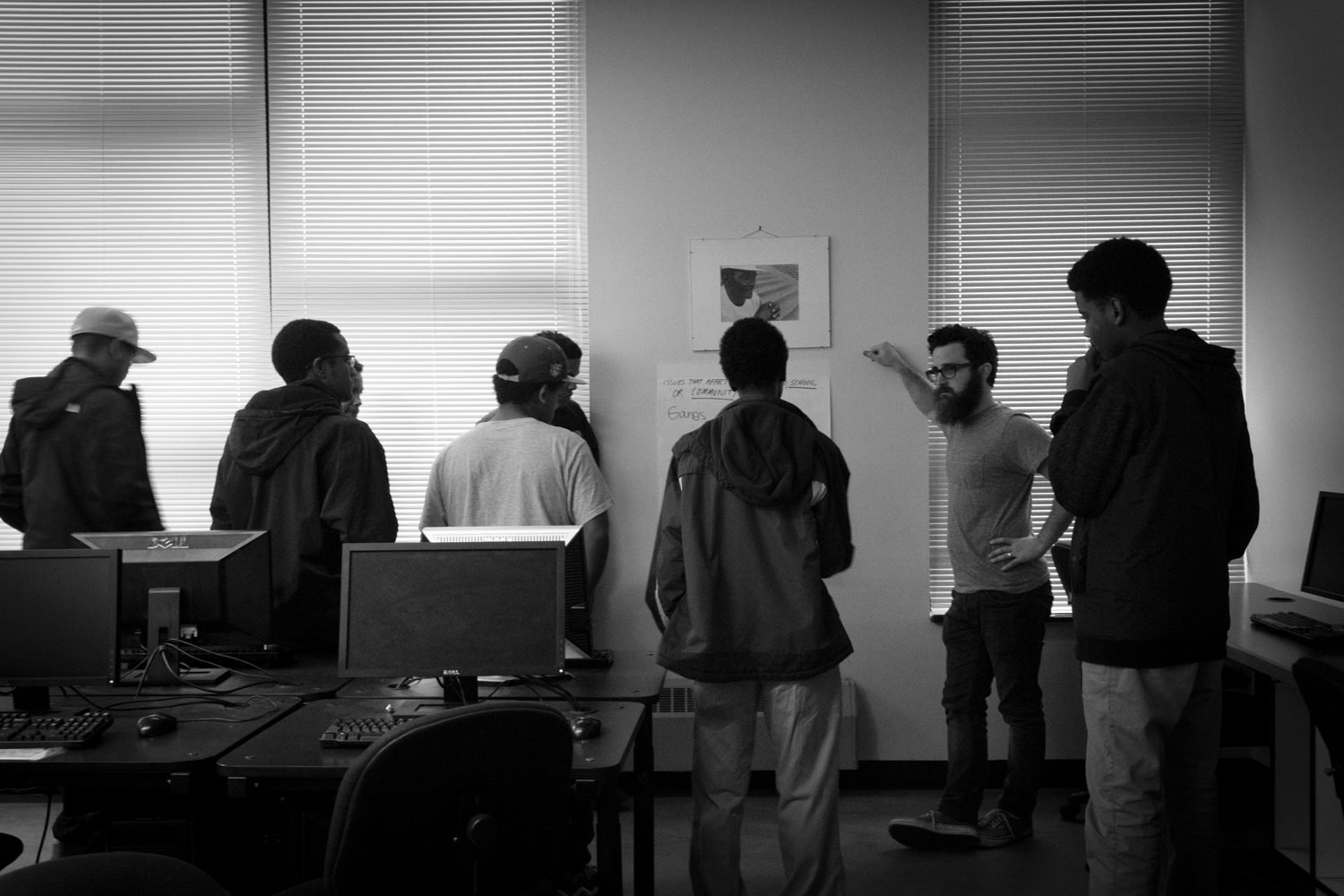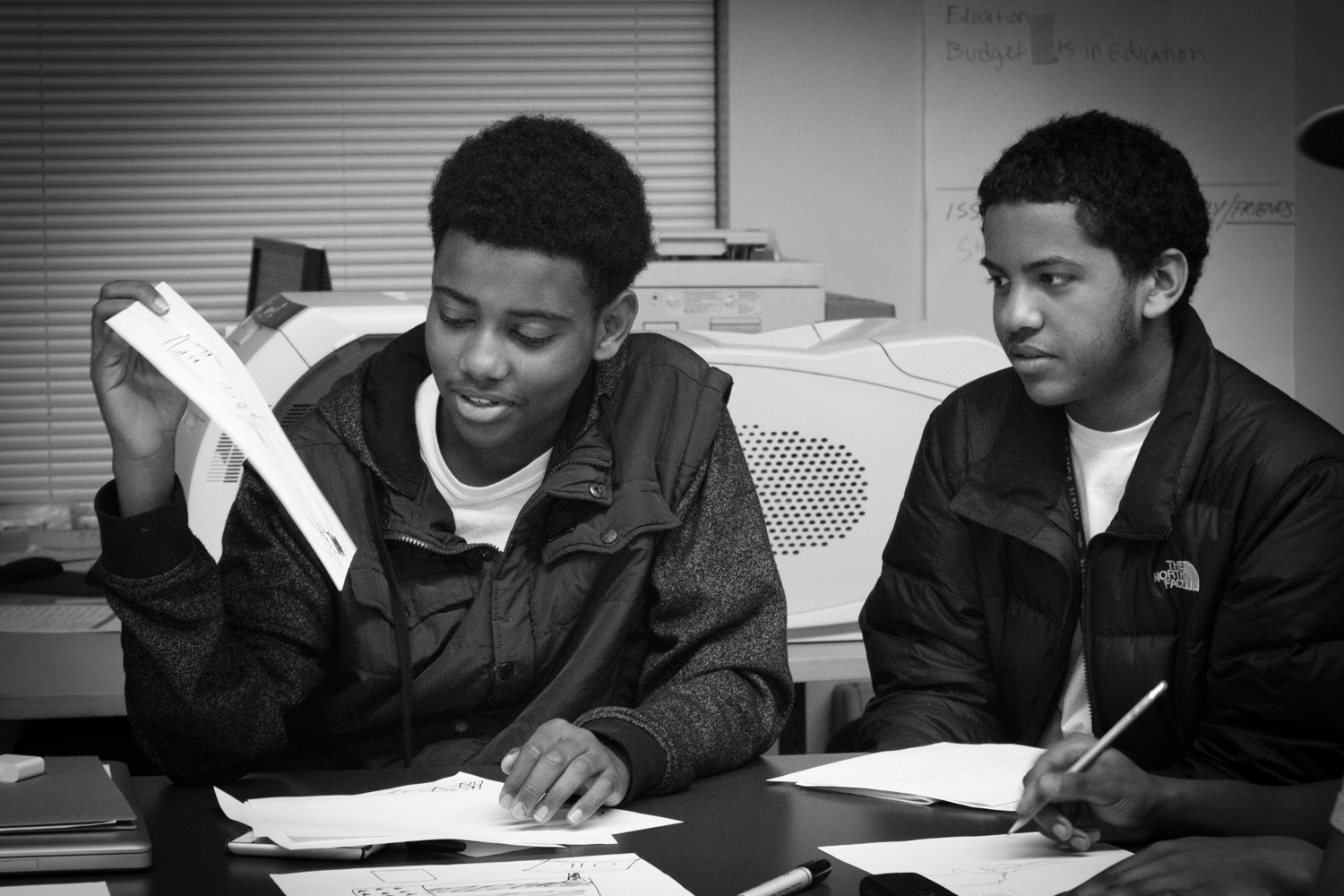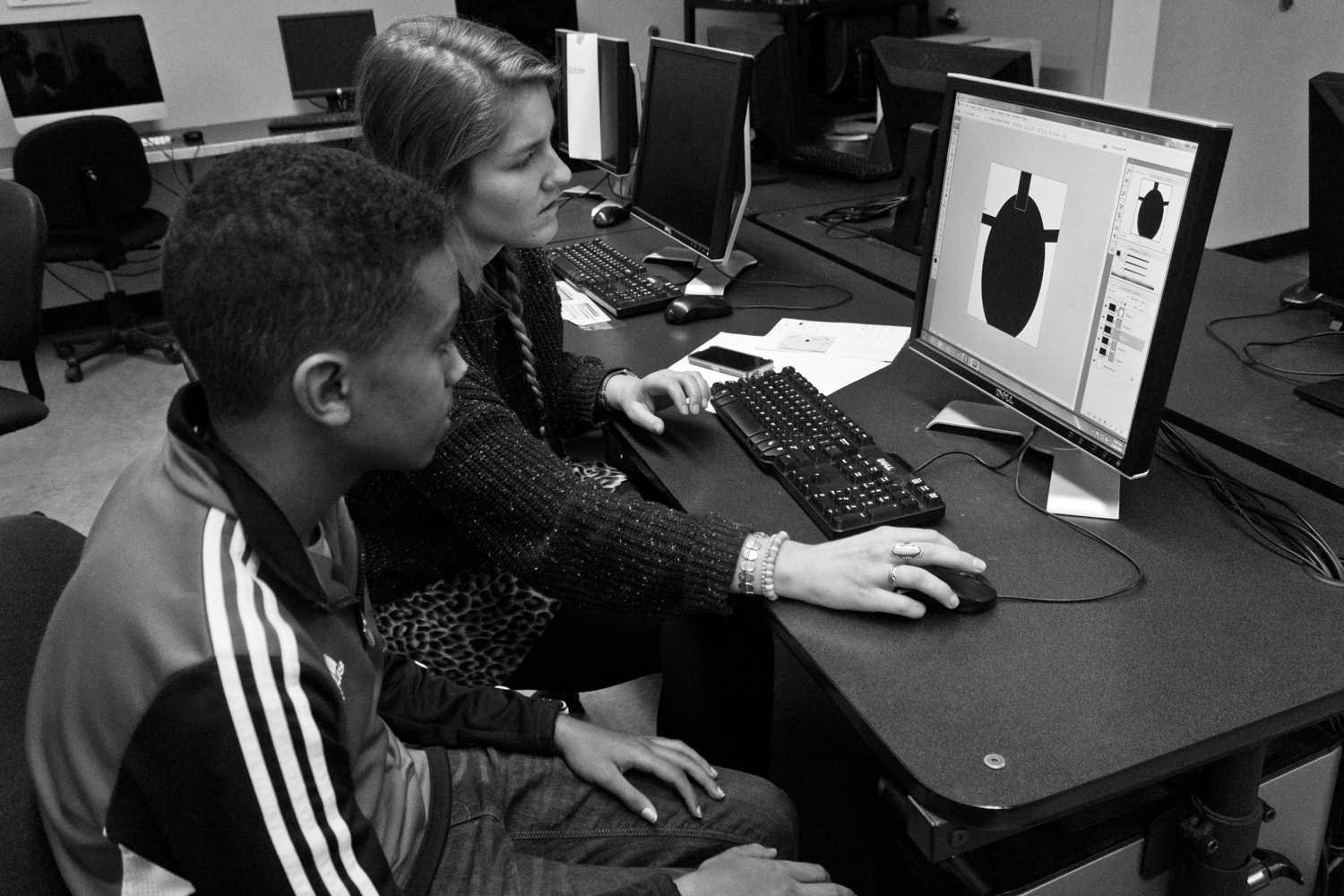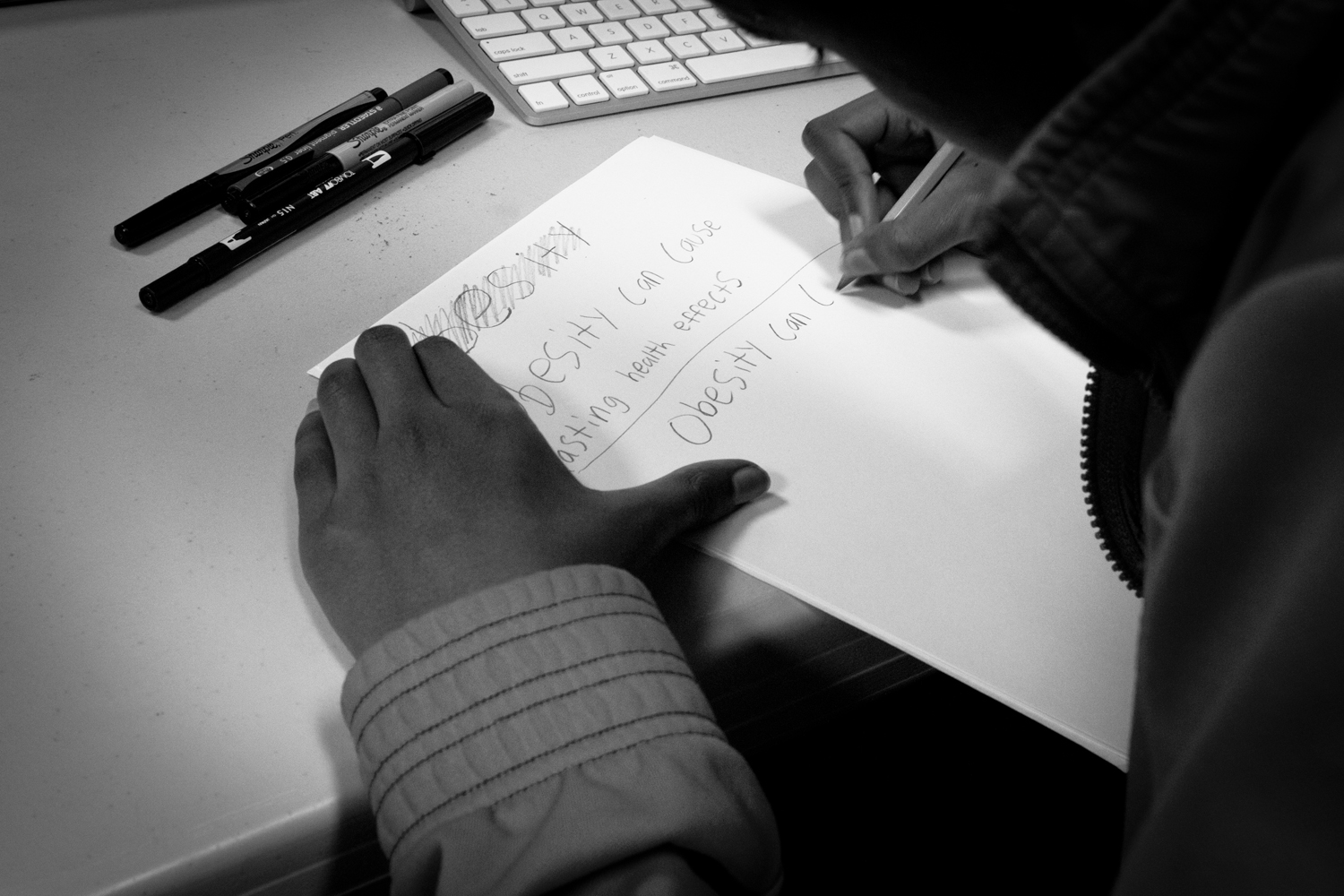THIS TOOLKIT EQUIPS GRAPHIC DESIGNERS WITH RESOURCES AND STRATEGIES FOR FACILITATING COMMUNITY-LED DESIGN PROJECTS.
Design for Us is a toolkit that offers strategies and methods to graphic designers interested in community advocacy. Using a workshop model, graphic designers and community members work together through a series of activities to address issues of concern with visual communication design. It provides insights into planning the workshop, interacting with stakeholders, topic exploration, and follow-up.
Whether you're a designer who wants to make a difference in the community or a seasoned advocate looking for more ways to cultivate action, this toolkit provides you with tips and principles to help facilitate meaningful engagement. It's designed to be flexible based on your community's needs and circumstances. Please share your stories and feedback in order to improve our collective efforts!
WHY THIS TOOLKIT?
POWER TO THE PEOPLE!
By equipping people with the basic tools of visual communication design, this Toolkit empowers them with their own voice rather than relying on someone else. As result, a sense of ownership and pride emerge. Fostering long-term efforts become more realistic, since they are powered from community members themselves, rather than an outside group.
HOME-GROWN
"Designing for good” sometimes falls short. Misunderstanding needs can, at times, have unintended consequences, and cause detrimental effects on a well-intentioned design project. The methods of this Toolkit aim to avoid these outcomes by allowing design concepts to be produced by those who best understand the problems fully—the community members themselves.
PEOPLE ARE HEARD
Whatever the socio-economic barrier, many people don’t have opportunities to speak up and be heard. Strategies in this Toolkit are built around hearing from them—offering options and resources to voice their concerns.
CUT OUT THE MIDDLE MAN
As an advocate, it can sometimes be challenging to articulate other peoples’ true needs. It’s complicated, but this Toolkit offers help. When equipped with design tools, people can voice issues in a different way. Design can be crafted to speak to a specific an audience and can simplify complicated messages. The design process opens up opportunities to hear from people and enable meaningful reflection upon needs and concerns.
OVERVIEW
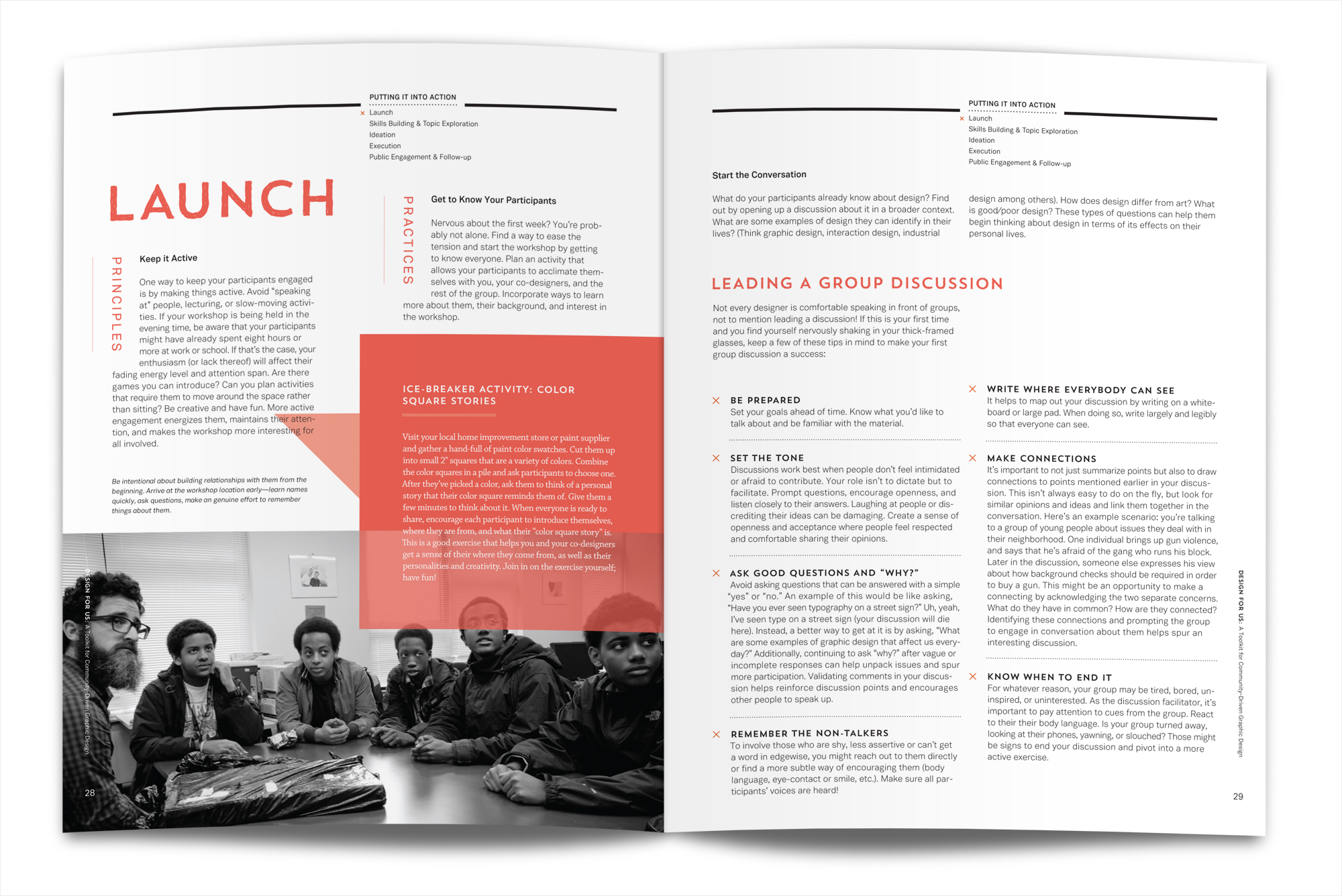
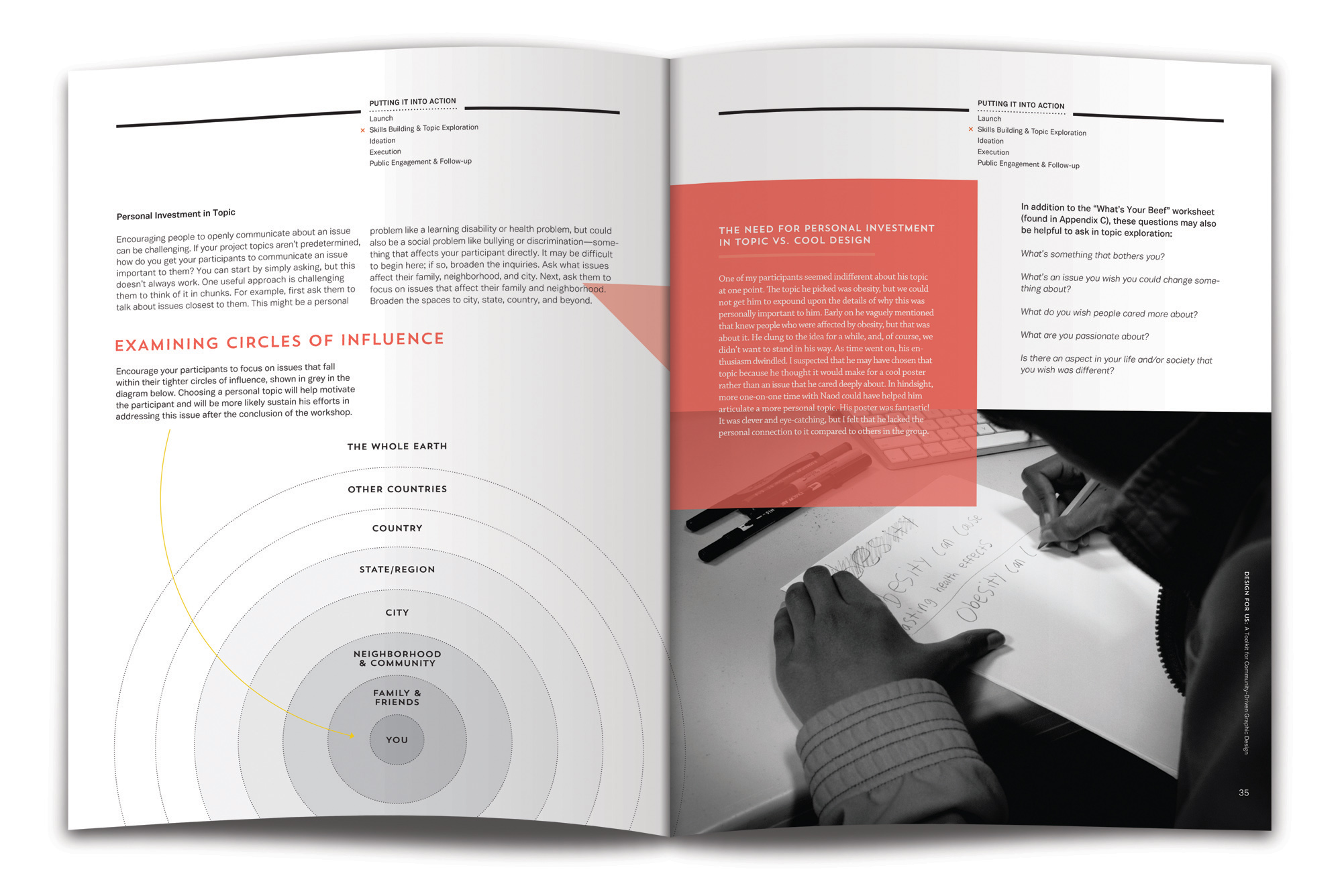

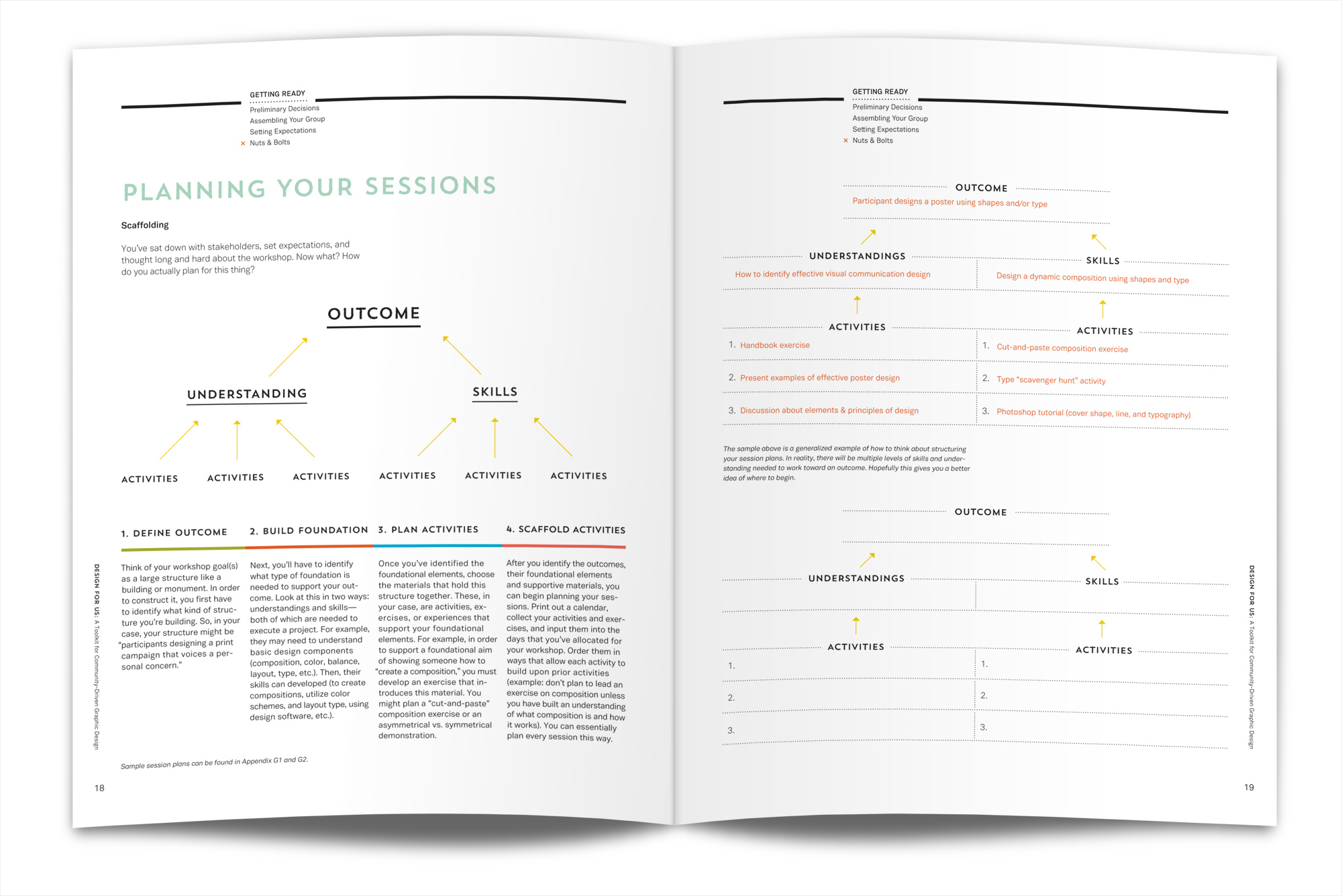


INTRODUCTION
Preface
Why This Toolkit?
Who Uses This Toolkit?
How Do I Use This Toolkit?
The toolkit begins with an overview of its relevance and use. By equipping graphic designers with the resources to facilitate a community workshop, this toolkit serves as an advocacy tool and gives community members a way to voice their concerns. It can be used by both designers and advocates, within a flexible format filled with personal stories and anecdotes. It’s a work-in-progress and relies on the people that use it to improve it.
GETTING READY
Preliminary Decisions
Assembling Your Group
Setting Expectations
Nuts & Bolts
Designers are gifted planners and logistical-minded thinkers, right? Not so much. This section of the toolkit helps with some of the heavy lifting by offering tips in preliminary planning. It discusses budgets, building partnerships, planning for impact measurment, roles and responsibilities, planning for workshop sessions, participant recruitment and necessary materials.
PUTTING IT INTO ACTION
Launch
Skills Building & Topic Exploration
Ideation
Execution
Public Engagement & Follow-up
Facilitating a workshop like this requires new skills of graphic designers. Things like leading discussions, managing group dynamics, navigating stakeholder relationships, and introducing visual communication design to non-designers can be daunting. This section of the toolkit introduces strategies to tackle these challenges and offers ideas for helping participants address their project topics
CONCLUSIONS
The Design for Us Principles
Share Your Story
The toolkit ends with reflection. It discusses the takeaways and invites the designer to share their story. By providing feedback about their personal experience online, this toolkit can constantly evolve—offering additional personal stories and tips that can ultimately will improve its effectiveness.
DOWNLOAD THE TOOLKIT
Fill out the form below, which will direct to a link to download a PDF version of the toolkit.
* Rest assured that your contact information will not be shared with anyone.
SHARE YOUR STORY
Have you used the toolkit? Have a story to share? Tell us about your experience! This resource can only improve with your feedback.
* Rest assured that your contact information will not be shared with anyone.
BACKGROUND
This project is based on a design workshop that Mike Fretto, graduate student at the University of Washington Division of Design, facilitated with a group of high school-aged participants and community partners from RecTec at Yesler Community Center and MMRTI in Seattle, WA. Empowered with the tools of visual communication design, he and an assistant worked with participants to develop posters that addressed issues of concern. The posters were printed by hand and distributed in the community by each participant. As a result, Mike developed the toolkit in hopes that it would provide resources for other graphic designers interested in facilitating similar community empowerment projects.
